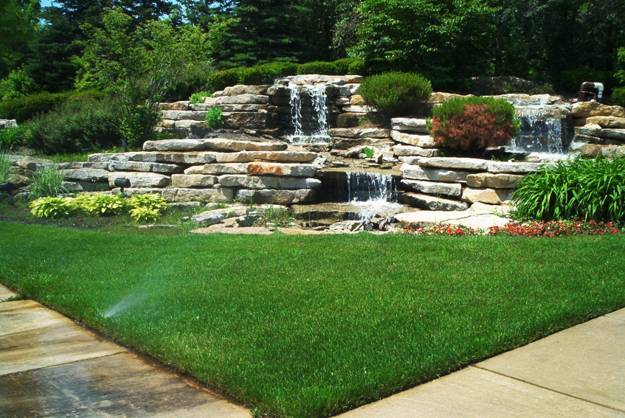
Gravel is the material commonly used as a retaining wall backfill, but it is not your only option. Aside from that, the backfill you use can also facilitate efficient draining. Backfill helps reinforce your retaining wall. One more reminder for building retaining walls that we want to share is related to backfill. Choose the Right Backfill Material for Your Retaining Wall Ensure that the structure has sufficient drainage at every level, so the water does not get stuck in certain areas.Īdd whichever features are necessary to your retaining wall to minimize the threat posed by pooling water.

You cannot forget to account for drainage when constructing your retaining wall. It may not remain a fixture in your yard because of that. If you fail to remove moisture quickly, that structure may sustain damage. Moisture can wreak havoc on your retaining wall. Work closely with landscaping specialists so they can lay down that foundation for your new retaining wall. No matter what kind of retaining wall you are planning to build, it must stand on top of a solid foundation. Those blocks also need to be perfectly level, or they will struggle to keep your retaining wall upright. Once that is done, you need to create the foundation by setting some blocks in place. If you want your retaining wall to stand the test of time, give it a solid foundation.ĭig out a trench that is deep enough to hold your retaining wall in place. Create a Solid Base for Your Retaining Wall
Sloping backyard waterfall professional#
Alternatively, you can also work with a design and build company to quickly find the professional you are looking for. Landscape architects are easy to find because you can use references provided by governing bodies. You need to work with a landscape architect if you want a properly designed retaining wall.

Even designing it can be a real challenge. To put it simply, building a retaining wall is no easy task. Factors such as the condition of your soil, property lines, and your preferences must also be accounted for when building the retaining wall. The structure in question must be designed specifically for the dimensions of your property, or it will not turn out well. There is no one-size-fits-all approach to building retaining walls. Consult with a contractor if you want to be certain about the requirements for your building project.Ĭonsider Working with a Landscape Architect Note that you will need a building permit even if your retaining wall only meets one of those conditions.

The retaining wall is over three feet tall.In San Diego County, you will need a building permit for your retaining wall if certain conditions are met. Whenever you are building a new structure on your property, you always need to ask if you will need a building permit. Building retaining walls properly takes a lot of work and preparation, and there are plenty of chances for you to mess up along the way.Īvoid making those potentially costly mistakes by always keeping the following tips in mind. The task of building retaining walls is not one you should tackle on a whim. Important Reminders for Building Retaining Walls Stick around if you want to learn more about your option. We will also provide some reminders for building retaining walls so you can avoid getting into trouble while reshaping your backyard. In this article, we will highlight different design options for your retaining walls. Get creative with your retaining walls, and you could be putting together a gorgeous outdoor landscape. We value retaining walls for their utility, but that does not prohibit them from adding some oomph to your backyard design. Without it, certain portions of your yard may be inaccessible or unusable. If you have a sloped backyard, building a retaining wall may even be a necessity. Retaining walls can be useful additions to your outdoor landscape.


 0 kommentar(er)
0 kommentar(er)
